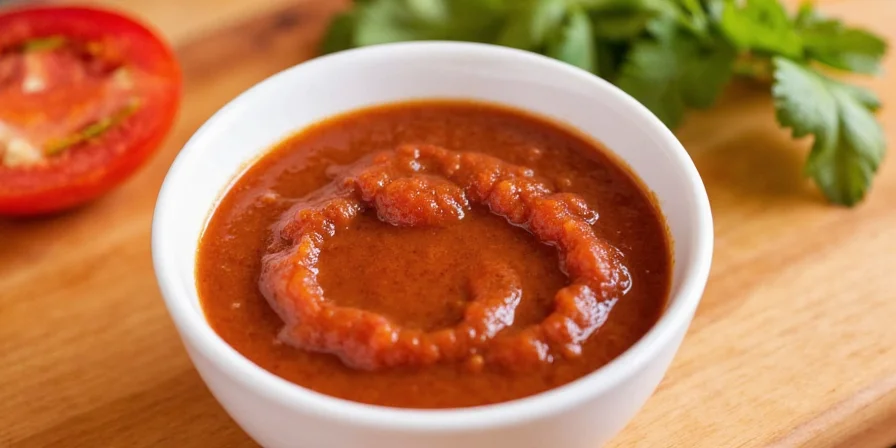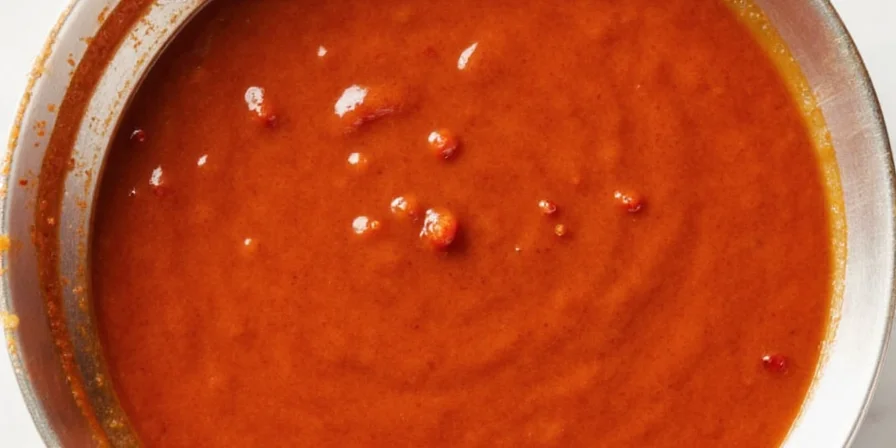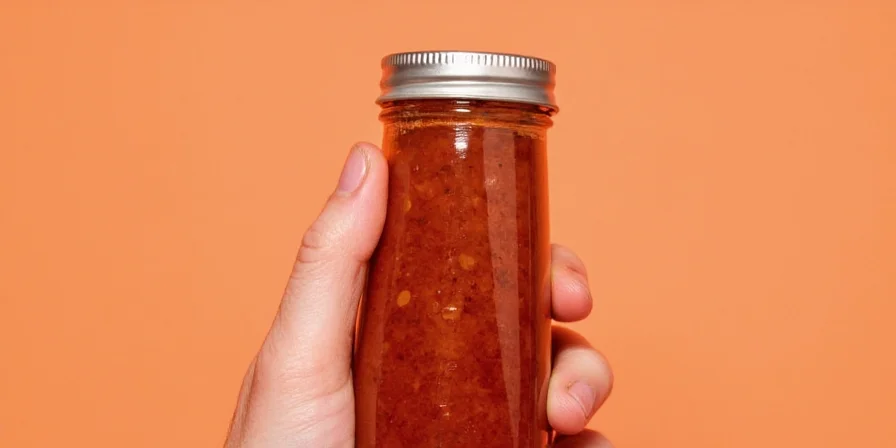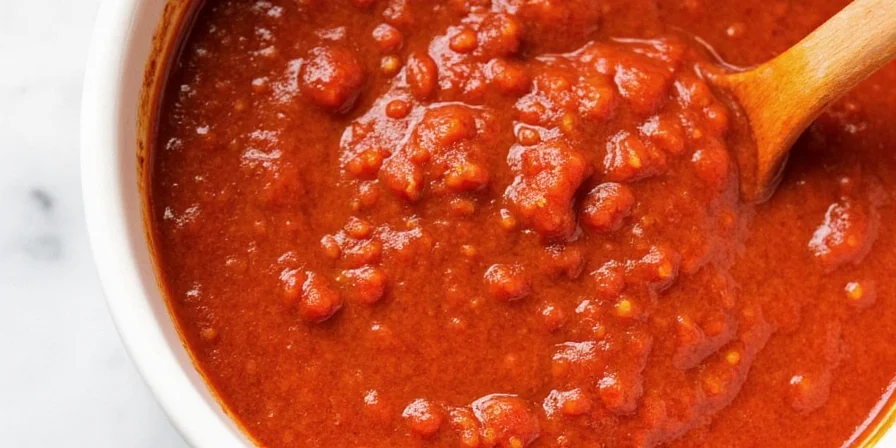If you've searched 'what is sofrito sauce' or 'easy sofrito recipe,' you've come to the right place. Sofrito is the flavorful foundation of countless global dishes—a simple blend of aromatic vegetables, herbs, and oil that transforms ordinary meals into extraordinary experiences. This guide delivers exactly what you need: a straightforward explanation, foolproof beginner recipe, and practical tips to start using sofrito today.
Table of Contents
- What Is Sofrito Sauce? (Simple Definition)
- Your First Easy Sofrito Recipe (5 Ingredients)
- Sofrito Around the World: Key Differences
- The 3 Essential Components of Perfect Sofrito
- 7 Beginner-Friendly Sofrito Tips
- 3 Simple Recipes to Use Sofrito Immediately
- How to Store Sofrito Properly
- Sofrito Myths Debunked (What Beginners Get Wrong)
- Sofrito FAQ: Quick Answers to Common Questions
- Why Sofrito Belongs in Every Home Cook's Toolkit
What Is Sofrito Sauce? (Simple Definition)
Sofrito is a cooking base made from sautéed vegetables, herbs, and oil. Unlike a finished sauce, sofrito serves as the flavor foundation for soups, stews, rice dishes, and more. Think of it as the 'onion soup' of cooking techniques — the essential starting point that makes everything taste better.
The magic happens when you slowly cook aromatics like onions, garlic, peppers, and tomatoes. This releases natural sugars and creates deep, complex flavors that raw ingredients can't provide. In Spanish, "sofrito" literally means "slightly fried" — describing the gentle cooking process that develops flavor without browning.

Your First Easy Sofrito Recipe (5 Ingredients)
Perfect for beginners, this classic Spanish-style sofrito works with everyday ingredients:
- 1 large onion, finely chopped
- 4 garlic cloves, minced
- 1 red bell pepper, finely chopped
- 2 ripe tomatoes, seeded and diced (or 1 cup canned)
- 3 tablespoons olive oil
- Heat olive oil in a skillet over medium-low heat
- Add onion and bell pepper, cook 10 minutes until soft (no browning)
- Add garlic, cook 2 minutes until fragrant
- Stir in tomatoes, reduce heat to low
- Cover and simmer 20 minutes, stirring occasionally
- Remove lid, cook 10 more minutes until thickened
Yield: About 2 cups | Storage: Refrigerate up to 5 days or freeze for 3 months
This basic sofrito works perfectly for paella, soups, stews, and as a pasta sauce base. Once you've mastered this version, try regional variations!
Sofrito Around the World: Key Differences
Understanding these main variations helps you choose the right type for your cooking:
| Style | Key Ingredients | Best For | Beginner Tip |
|---|---|---|---|
| Spanish | Onion, garlic, tomato, bell pepper | Paella, soups, tomato sauces | Add tomato late to keep bright flavor |
| Puerto Rican | Culantro, cilantro, ají dulce peppers | Rice dishes, beans | Blend raw then gently warm |
| Italian (Soffritto) | Onion, carrot, celery | Minestrone, meat sauces | Dice uniformly for even cooking |
| Mexican | Tomato, onion, chili, garlic | Moles, bean dishes | Dry roast ingredients first |
The 3 Essential Components of Perfect Sofrito
Every great sofrito needs these three elements, regardless of regional style:
- The Holy Trinity (Base Vegetables): Onion, garlic, and either bell pepper (Spanish/Latin styles) or celery (Italian style). Chop uniformly for even cooking.
- Fat Medium: Olive oil for Mediterranean styles; lard or vegetable oil for Latin versions. Don't skimp — fat carries flavor.
- Moisture Element: Tomatoes (Spanish/Mexican), culantro (Puerto Rican), or nothing (Italian soffritto). Adds liquid for gentle cooking and depth.
Get these three components right, and your sofrito will deliver restaurant-quality results every time.

7 Beginner-Friendly Sofrito Tips
Start with these practical tips before diving into advanced techniques:
- Low and slow wins the race: Cook over medium-low heat — sofrito should never brown or burn.
- Prep everything first: Have all ingredients chopped and ready before heating oil.
- Salt early: Add 1/4 tsp salt when adding onions to draw out moisture for better flavor development.
- Cover while cooking: Traps steam to soften vegetables without browning.
- Don't rush the process: Minimum 25 minutes cooking time for proper flavor development.
- Taste as you go: Adjust seasoning after 20 minutes of cooking when flavors have blended.
- Start with canned tomatoes: Easier for beginners than dealing with fresh seeded tomatoes.
3 Simple Recipes to Use Sofrito Immediately
Try these beginner-friendly applications of your homemade sofrito:
- Instant Flavorful Rice: Cook 1 cup rice with 2 cups water + 1/2 cup sofrito. Fluff with fork when done.
- 5-Ingredient Tomato Sauce: Simmer 2 cups crushed tomatoes with 1/2 cup sofrito for 20 minutes.
- Weeknight Bean Boost: Stir 1/4 cup sofrito into canned beans while heating.

How to Store Sofrito Properly
Preserve your sofrito's fresh flavor with these simple methods:
- Refrigerator: Store in airtight container for up to 5 days. Top with thin layer of oil to prevent drying.
- Freezer: Portion into ice cube trays, freeze, then transfer cubes to freezer bag (keeps 3 months).
- Never: Store at room temperature or in non-airtight containers.
Sofrito Myths Debunked (What Beginners Get Wrong)
Clear up confusion with these straightforward facts:
- Myth: "Sofrito must contain tomatoes" → Fact: Italian soffritto and some Puerto Rican versions omit tomatoes.
- Myth: "It needs special equipment" → Fact: Only requires a knife and skillet — no fancy tools needed.
- Myth: "Raw blends work the same" → Fact: Cooking develops flavors raw ingredients can't provide.
- Myth: "One size fits all" → Fact: Different dishes need different sofrito styles for best results.
Sofrito FAQ: Quick Answers to Common Questions
What's the difference between sofrito and mirepoix?
Sofrito typically includes tomatoes and herbs with olive oil, while mirepoix (French) uses onion, carrot, celery with butter. Sofrito is sautéed; mirepoix is often simmered.
Can I make sofrito without tomatoes?
Yes! Italian soffritto omits tomatoes entirely. Puerto Rican versions sometimes skip tomatoes to highlight fresh herb flavors. Tomatoes aren't mandatory in all sofrito styles.
Why did my sofrito turn brown?
Heat was too high. Sofrito should cook slowly over medium-low heat without browning. If it browns, flavors become bitter. Start again at lower temperature.
How can I fix bitter sofrito?
Add 1/4 teaspoon sugar or a small peeled potato to absorb bitterness. For future batches, cook garlic for less time — it burns easily and causes bitterness.
Can I use frozen vegetables for sofrito?
Not recommended. Frozen vegetables release too much water, preventing proper flavor development. Fresh vegetables work best for authentic texture and taste.
Why Sofrito Belongs in Every Home Cook's Toolkit
Sofrito solves the #1 cooking challenge most home chefs face: creating depth of flavor quickly. You don't need expensive ingredients or hours of cooking time — just this simple aromatic base transforms everyday ingredients into something special. The beauty of sofrito is its simplicity: five basic ingredients, one skillet, and patience yields results that impress. Start with the beginner recipe, master the technique, then experiment with regional variations. Within weeks, you'll wonder how you ever cooked without this essential flavor foundation. Great cooking isn't about complexity — it's about understanding how simple ingredients work together, and sofrito is the perfect place to begin that journey.

Ready to transform your cooking? Try the beginner recipe today and share your results in the comments!











 浙公网安备
33010002000092号
浙公网安备
33010002000092号 浙B2-20120091-4
浙B2-20120091-4